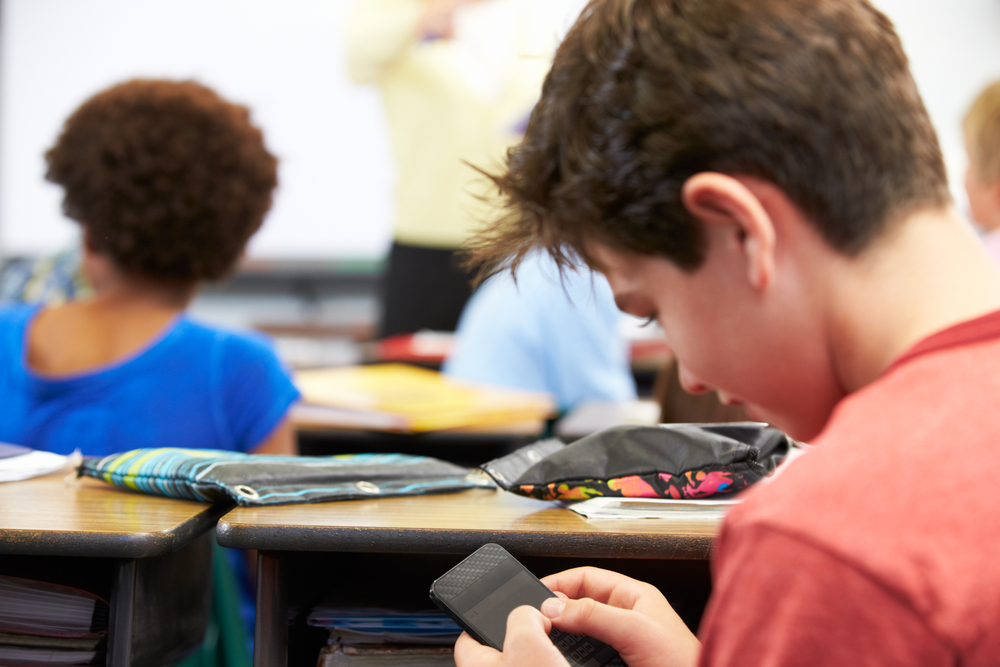In a recent study by Nielsen, a sample of 4,646 American parents revealed that 45% of kids got a service plan at 10-12 years old. This means that their phones can not only text and call, but can also connect to the internet. Cell phones continue to be more and more common for younger kids. So how should they be approached in the classroom?
Distraction
It’s no surprise that having access to a phone or device can be a distraction. No matter how engaging a class may be, a student will still want to check his or her phone if they get a notification. Putting away all phones and devices and turning off the sound could help this. However, students will still feel the need to check their notifications. Scientists discovered that our brain releases dopamine every time we get a notification. It fulfills us and makes us feel loved and wanted. This affects everyone, adults and children alike. We can’t blame students for feeling the need to check their phones. Still, there’s no denying that this is a huge distraction in the classroom.
Access to the Internet
Most of the phones and tablets that students have will also have access to the internet. This can easily be a distraction, but it can also easily be a great resource, too. It all depends on how you incorporate phones into lessons. If you choose to ban them altogether, many students will try to hide their phones in their backpacks or under their desks. If you choose to let students to use the internet as an academic resource, you’ll still have to monitor to make sure they’re using their phones responsibly. By allowing students to use phones in a positive way, you’ll teach them to understand the differences between positive phone use and when to put phones away. This is especially true if you have times that are phone-friendly and certain times when phones should be put away.
Will Students Crave What’s Taboo?
This is where it’s important to balance cell phone or tablet use. If you make it completely off-limits, students will still find ways to use their devices. One way to help with this is to incorporate phone use into classwork. You may also want to let students have small 5 minute breaks during a class, during which they’re allowed to use their phones. If you give your students small opportunities to use their phone, they’ll have less of a reason to use it during class time. There are both positives and negatives to technology in the classroom. For some perspectives from professors, check out this article published by NPR.
There’s no right way to use cell phones, tablets or laptops in a classroom setting. No matter what, some students will try to take advantages of your policies. It’s best to give your students as many positive technology outlets as possible so that technology becomes part of the lesson, rather than a distraction from it.
Text by Katherine Polcari


